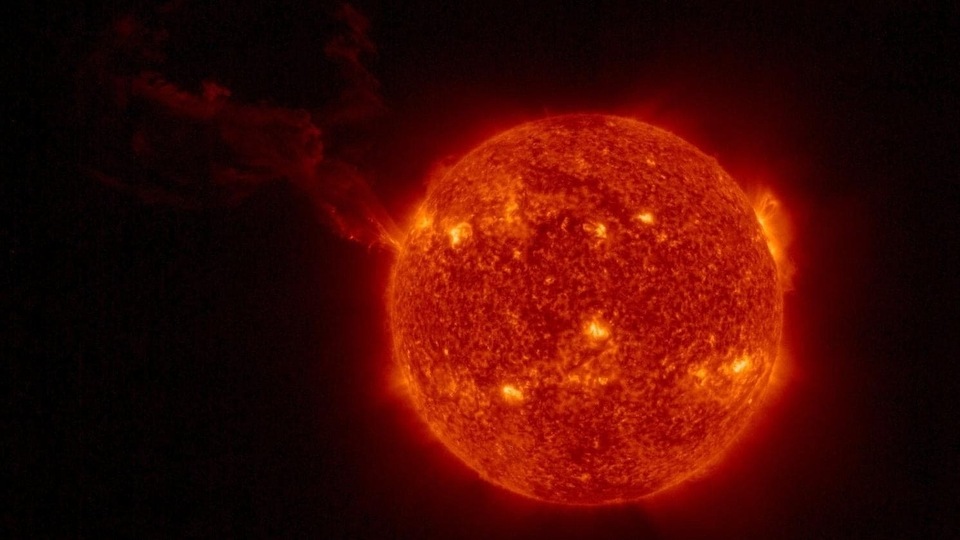M 60 flare at Active Region 13413 - September 3 2023. Astronomy The Sun Solar maximum could hit us harder and sooner than we thought How dangerous will the suns chaotic peak be News By Harry Baker published 24 June 2023 The sun. It began on September 5 2022 and lasted nearly two full days scientists detail in a new paper published in the Astrophysical Journal At the time the Parker Solar Probe was a mere 57. A huge solar filament eruption has hurled a coronal mass ejection CME toward Earth on Sept NASASDO Solar physicist Keith Strong took to X. The Sun emitted a strong solar flare peaking at 455 pm NASAs Solar Dynamics Observatory which watches the Sun constantly captured an image of the..
Last updated 1 December 2023 A recent solar explosion that almost reached X-class status has hurled a massive coronal mass ejection toward Earth. The speedy plasma outburst will merge with several slower upstream CMEs that left the sun a day earlier Nov. According to the NOAAs Space Weather Prediction Center it peaked at 2155 UTC 455 pm EST on December 31 shortly after NASA. On this page you will find an overview of the strongest solar flares of the year 2023 together with links to more information in our archive and a. Analysis and model results suggest G1 levels are probable on the 30 Nov UTC-day in response to any initial CME influences followed by G2 levels..
A Powerful Solar Eruption on Far Side of Sun Still Impacted Earth A massive eruption of solar material known as a coronal mass ejection or CME. The Sun emitted a strong X-class solar flare peaking at 1252 pm NASAs Solar Dynamics Observatory which watches. On this page you will find an overview of the strongest solar flares of the year 2023 together with links to more information in our archive and a. A massive eruption of solar material known as a coronal mass ejection or CME was detected escaping from the sun at 1136 pm. The sun has emitted a strong solar flare that peaked at 1033 pm NASAs Solar Dynamics Observatory which watches..
NASAs Solar Dynamics Observatory captured this image of an X18-class solar flare on Feb NASASDO While most of the energetic material that erupted. The Sun emitted two strong solar flares the first one peaking at 607 pm 21 2024 and the second peaking at 132 am. The Sun emitted a strong solar flare peaking at 153 am NASAs Solar Dynamics Observatory which watches the Sun constantly captured an image. Sun Releases Strong Solar Flare The Sun emitted a strong solar flare peaking at 814 am NASAs Solar Dynamics Observatory which watches the Sun. The Sun emitted a strong solar flare peaking at 153 am EST on Friday February 16 2024 NASA s Solar Dynamics Observatory which watches the Sun constantly captured an image..


Komentar